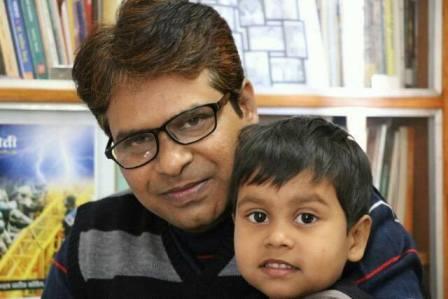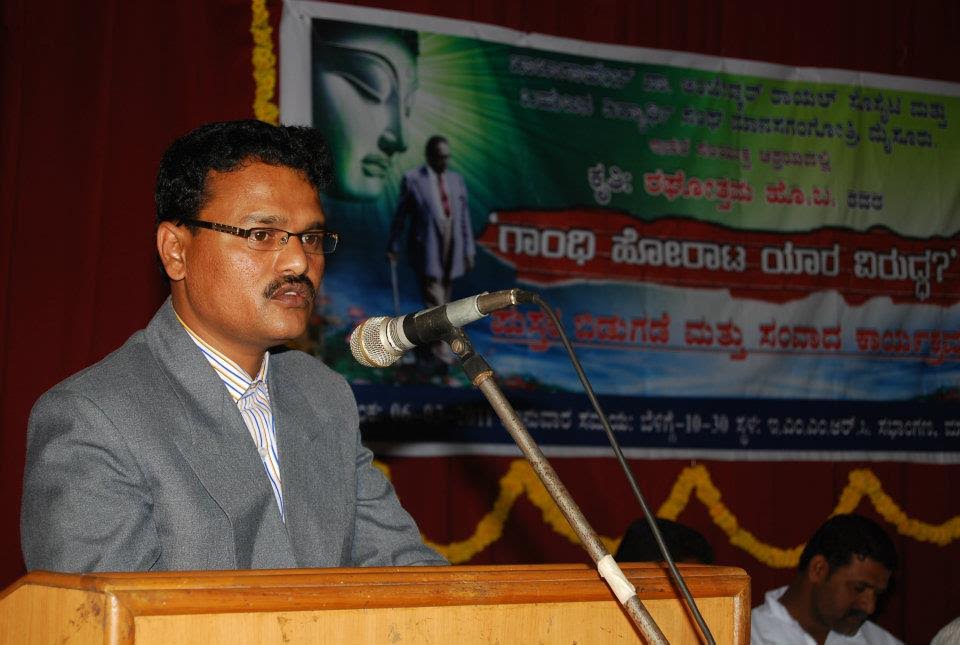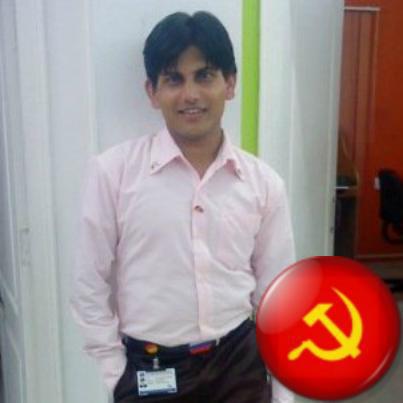Sachin Garud
 It is a well-known fact that at the time of India’s national movement, there was another movement known as the movement of social engineering or social revolution, led by Mahatma Phule, who had pioneered the foundation of a social revolution in India. Although contemporary thinkers like Ram Mohan Roy, Justice M.G. Ranade and G.G. Agarkar were quite active in social reforms at that time, Mahatma Phule was different from them as he was the first non-Brahmin social revolutionary in India.
It is a well-known fact that at the time of India’s national movement, there was another movement known as the movement of social engineering or social revolution, led by Mahatma Phule, who had pioneered the foundation of a social revolution in India. Although contemporary thinkers like Ram Mohan Roy, Justice M.G. Ranade and G.G. Agarkar were quite active in social reforms at that time, Mahatma Phule was different from them as he was the first non-Brahmin social revolutionary in India.
Phule believed that radical ideology must be complemented by radical practices, which was in striking contrast to the upper caste elite thinkers and social reformers of his time. He criticized the literature of Vedas and Puranas and Hindu mythological stories woven around deities that facilitated special privileges to Brahmins in every sphere of life. Brahmins always had the upper hand and authoritative power of decision-making, particularly in religious affairs. The significance of his movement was that it not only aimed to eradicate caste-hierarchy from the society but also protested against gender inequity. He advocated the progress of backward caste communities while emphasizing the importance of imparting education to women in the family. In other words, he insisted on gender equality in the field of education, property, jobs, and of course, in the family.
During the nineteenth century, contemporaries of Phule who belonged to the upper strata of society tried to enlighten the masses on critical and sensitive issues like the caste-based patriarchal practices of Sati, and child–marriage, while also building up a favourable public opinion towards widow re-marriage and women’s education. Nevertheless, the approach of these thinkers was within the framework of caste hierarchy and based on the principles and practices of Vedic-Brahmanic Dharmashastras.
Mahatma Phule was against this approach and argued for the emancipation of women from these socio-religious shackles, and eradication of caste hierarchy. In this way, Phule’s anti-caste outlook was more sensitive to gender equality than other social reformers of his time. He included women of all castes and communities in his notion of the ‘oppressed’, which shows his consideration for those women who were victims of Brahmanical culture and power in common with other low caste people and untouchables.
While Karl Marx was propagating the theory of Class Struggle in Europe, Mahatma Phule in India was not merely advocating but was practically involved in mobilizing the lower castes and women to organize against Brahmanical exploitations. To quote G.P. Deshpande, “Phule was the first to identify and theorize the bipolar (dvaivarnik) structure of Indian Society, marked by the dichotomous relationship between the oppressors (the Brahmans) and the oppressed (Stri-Shudra-Atishudras).[1]
It is to be noted here that Mahatma Phule used the term ‘Stri-Shudra-Atishudras’, thereby connecting all categories of women with Shudra-Atishudras, which includes middle castes, untouchables, tribes (Adivasis) and all other castes that are at the receiving end of the Brahmanical order. He also made an attempt to unify all Non-Brahmin castes by clubbing them into one category—Non-Aryans. Mahatma Phule says that according to the Dharmashastras all women, irrespective of their castes, are inferior creatures and hence invariably in the same group as Shudras and Dasas.
He realised that since women were the biological reproducers of caste-patriarchy, the regulation, and control of their sexuality was crucial to retain and preserve the ‘pure’ roots of caste and lineage. The notions of purity and impurity are extremely complex and vary greatly among different castes. For example, high castes are always associated with purity whereas lower castes are equated with impurity as mentioned in Dharmashastras, which also say that an impurity means ‘varnasankara’ (mixing of caste). Therefore Phule, denounced the chaturvarna system, attacked the notions of purity and impurity in his writings, and examined the motives and objects of the cruel and inhuman laws framed by the Brahmins.
Brahmanical hegemonic culture represents a specific view of the world, based on caste-bound social order and patriarchal oppression. However, there are other dimensions to this, which are class and caste. In this regard, Phule was not definite about the role of endogamy in caste patriarchy and the control of women, but he was well aware of the fact that there was a power structure between men and women. According to him, in the Brahmanical social order ‘Stri-Shudra-Atishudras’ were not allowed to enter the field of knowledge and education since it was a monopoly of the Brahmins. This caused ‘Stri-Shudra-Atishudras’ to remain in slavery. Phule realized the significance of Knowledge as a key to their emancipation and as a tool for breaking the monopoly of Brahmins in the society. His pedagogy clearly mentions the magnitude of the relation between ‘Knowledge’ and ‘Power’.

To recall Professor Deshpande’s argument, Phule spoke of the relationship between Knowledge and Power much before Foucault did. To quote him, “In fact, Foucault’s post-modernist analysis came at a time when Europe was literally seeing an ‘End of History’, whereas Phule’s efforts were to change the world /Society with the weapon of Knowledge.”[2] Therefore, Phule was right in his writings when he says that the Third Eye (Tritiya Netra) is Knowledge, as it can mentally and materially emancipate human beings. He describes three types of Knowledge: (1) Knowledge of self, which means to realize one’s own consciousness and come out of the pseudo understanding of caste, class, race and gender. (2) The collective knowledge, which means a social cluster that introduces itself or an individual according to class, caste, race and gender, and makes aware of the dynamism of Knowledge. (3) Practical, technical and scientific knowledge, that helps human beings in materialistic progress as well as emancipation.
As far as the issue of gender is concerned, it can be observed that most of the social reformers at that time with elitist backgrounds, had an agenda for the improvement of women’s social status, whereas Mahatma Phule believed in equal status for women and wanted equal and common human rights for women at par with men. His was the first attempt in modern Indian history to co-relate the slavery of women with oppressed castes in Indian society. His critique of history is based on the references to patriarchal conditions on women, caste-based slavery, untouchables within and outside of the village boundaries, and peasants and artisans included in the caste hierarchy.
In the Brahmanical system, though poor farmers were exploited, he brought to notice that the peasant women were most exploited. He says in his Akhandas that in caste hierarchy, unlike Brahmin women, the peasant women engaged both in household and agricultural work, thus doing far more physical labour. To make a point here, Mahatma Phule could imagine the stratification of labour and exploitation of women in India much before Karl Marx could visualize the exploitation labour merely for men. His conscious mind quantified the division of labour based on caste and gender, which is why he explains how in a peasant/artisan’s family, immediately after marriage, women engaged themselves in domestic labour as well as artisan labour, based on caste patriarchy.
Phule also criticized the nature of exploitation by oppressed classes and castes of women in their own families. This was a genuine concern for women since these women were more vulnerable to getting exploited by men who were themselves victims of a caste-ridden society. In the words of Professor Gail Omvedt, “His depth of pro-feminist feeling was great enough that he was ready to attack one of his co-workers, Krishnarao Bhalekar. Bhalekar, it seems, had written a severe criticism of a book published by one Tarabai Shinde, comparing men and women (Stri-Purusha Tulana). Phule replied in 1885 with an attack that was ferocious and in some ways more bitter than his attack on Brahmans.”[3]
He also put forward an alternative framework of gender equality based on social, cultural and religious structures. While doing so, Mahatma Phule gives special attention to the fact that all religious scriptures were written by men, and none were written by women. According to him, this showed that women were more peace-abiding and creative. Therefore, Phule in his Sarvajanik Satyadharma rejects the concepts of god, soul, re-birth, and theories of karma and rituals based on caste, class and gender. He accepted instead the philosophies of secular and humanistic religions, inspired by Buddhism, Jainism, Lokayata and Sant Kabir.
~
Notes
1. Professor Deshpande argues that Phule was the first to think of Indian society in terms of class. He was categorical that Shudra-Atishudras were all labouring castes, as they had to suffer oppression at the hands of the Brahmins or upper caste elites.
For details see, G.P. Deshpande, (Ed.) Selected Writings of Jotirao Phule, (New Delhi: Leftword, 2002) pp 20-21
2. Ibid
3. Gail Omvedt, Jotirao Phule and the Ideology of Social Revolution in India, (New Delhi: Critical Quest, 2004) p. 10
References
1. Deshpande, G.P.(Ed.) Selected Writings of Jotirao Phule, (New Delhi: Leftword,
2002)
2. Keer Dhanajay, Mahatma Jotirao Phule: Father of Indian Social Revolution, (Bombay: Popular Prakashan, 2000)
3. Narake, Hari, (Ed.), Mahatma Phule : Navya Shodhachya Vata, (Mumbai: Govt.
of Maharashtra, 2004) (in Marathi)
4. O’Hanlon, Rosalind, Caste, Conflict and Ideology: Mahatma Jotirao Phule and
Low Caste protest in Nineteenth Century in Western India, (Cambridge:
Cambridge University Press, 1985)
5. Omvedt, Gail, Jotirao Phule and the Ideology of Social Revolution in India, (New
Delhi: Critical Quest, 2004)
6. Phadke, Y.D., (Ed.) Mahatma Phule Samagra Vandgamaya, (Mumbai: Govt. Of
Maharashtra, 1994) (in Marahti)
~~~
Prof. Sachin Garud is a young Historian, Writer, Ambedkarite activist and Head, Dept of History, K.B.P College, Islampur, Maharashtra.










